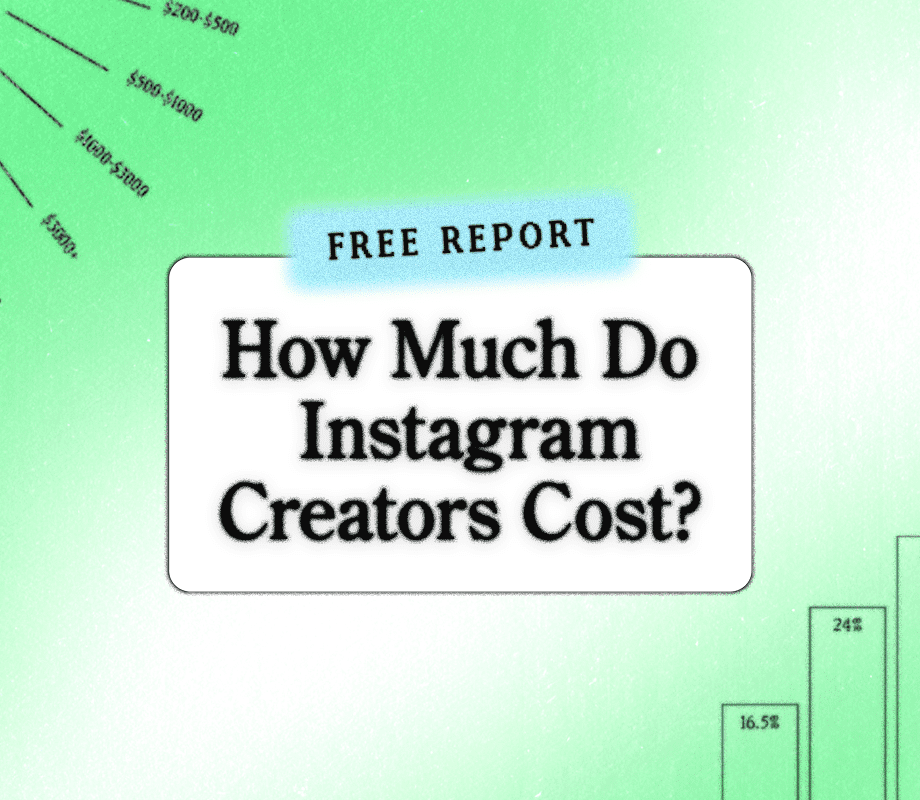What Factors Impact Influencer Rates?
While the influencer marketing industry is set to grow to $21B in 2023, influencer rates are not one-size-fits-all.
From follower count to the type of collaboration, many factors ultimately determine an influencer’s unique final price.
Let’s dive into them:
1. Number of Followers and Engagement Rate
Typically, influencer rates closely depend on their follower count (and engagement rate).
Mid and Macro influencers, for example, have gigantic audiences — making them an excellent choice for campaigns where mass awareness is key:
However, this impressive social clout often comes at a cost — with the price of a sponsored Instagram post costing thousands of dollars.
On the flip side, Nano and Micro influencers have smaller but more engaged audiences, making them a great choice for brands looking to tap into hyper-niche communities:
Plus, budget-wise, Nano and Micro influencers are typically a more affordable choice compared to their Macro counterparts.
In fact, according to ‘s free Creator Rates Report, for a singular Instagram Reel, influencers can charge (as a baseline fee):
-
Nano creators (0-10K followers): $100-$200
-
Micro creators (10K-100K followers): $200-$1K
-
Mid creators (100K-500K followers): $1.5K-$5K
-
Macro creators (500K+ followers): $5K-$7K+
FYI: Influence™ is an influencer marketing platform trusted by enterprise brands to grow and manage their campaigns. Learn more.
2. Social Platform
Before landing on a price, it’s important to consider whether the influencer is expected to create content for more than one social platform.
For example, do you expect them to post on Instagram and TikTok? Create a YouTube video, a few Tweets, and a LinkedIn post?
Common platforms to package into a brand partnership deal include:
-
Instagram
-
TikTok
-
Facebook
-
Pinterest
-
YouTube
-
LinkedIn
-
Twitter
Just remember, the more platforms added to the package = higher costs.
3. Type of Collaboration
As collaborations go, there are near endless ways that brands and creators can link up.
Here are the five most common influencer marketing partnerships:
A) Sponsored Content
Sponsored content can include anything from in-feed posts on Instagram to TikTok videos that feature a brand’s product or service.
It’s a great way for brands to tap into a treasure trove of potential customers.
TIP: Always be open and honest with your community by properly disclosing your sponsored Instagram posts.
B) Affiliate Marketing
Affiliate marketing is a way for influencers to earn a commission payment for the clicks or sales they drive on behalf of brands.
To earn this commission, influencers will use uniquely trackable links (known as affiliate links) to track how many clicks or sales were made.
To learn more about affiliate marketing, bookmark this: Affiliate Marketing for Influencers: How to Make Money on Instagram
C) Giveaways
An Instagram giveaway is a great tactic for encouraging engagement and reaching new audiences.
By collaborating with an influencer, brands can giveaway a newly launched (or popular) product, and drive brand awareness in the process.
Need help planning and hosting a giveaway? Read this: How to Host an Instagram Giveaway: A Step-by-step Guide
D) Instagram Stories Takeovers
Instagram Stories takeovers typically involve an influencer temporarily “taking over” a brand’s account.
During the takeover, the influencer will show how they use a brand’s products or services, providing valuable “real life” context along the way.
This type of partnership can help humanize a brand and make them come across as more relatable — rather than overly “salesy.”
E) Instagram Collab
Instagram Collab posts lets two users co-author the same post or Reel to their feed:
You’ll share views, likes, and comments — allowing you and the influencer to leverage and engage with each other’s communities.
Talk about a major exposure play!
4. Deliverables and Usage Rights
Certain partnerships may require more deliverables and therefore might come with a higher price tag.
Before collaborating with an influencer, decide on the following factors before setting a price:
-
Deliverables: Will they be creating static images or video content like Reels? How many?
-
Length of the contract: How long will the campaign or partnership run for? Is it a one-off partnership or ongoing?
-
Usage rights: Will you use their content for promotional purposes or on other platforms? How long will you use their content?
-
Exclusivity clause: Can they partner with a competitor during (or after) the campaign? How long will the clause be?
FYI: After surveying over 500 creators for our Creator Rates Report, these are the top three factors that impact an influencer’s rates:
-
Content format
-
Scope of work and resources required
-
Expected time to deliver and create content

